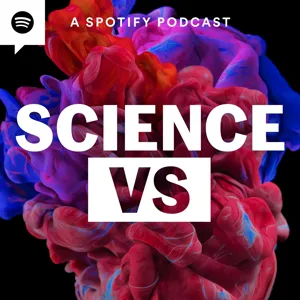Podcast Summary
5G Rollout: A Contentious Issue: The rollout of 5G technology raises concerns about potential health and environmental risks, with the scientific community divided on the issue.
The rollout of 5G technology, which promises ultra-fast download speeds and the ability to connect all devices through the Internet of Things, has become a contentious issue due to concerns about potential health and environmental risks. While some see it as a revolutionary advancement, others fear the consequences for human health and the impact on wildlife. The scientific community is divided on the issue, with some raising concerns about the lack of adequate testing and the potential for harm to DNA and brain function. The EU has even listed 5G as an emerging health and environmental issue, alongside e-cigarettes and microplastics. As the debate continues, it's important to stay informed and consider the potential benefits and risks before making a decision.
Transitioning to 5g: Balancing Benefits and Risks: As we adopt 5g technology for faster internet, it's crucial to consider potential health and environmental risks and weigh the benefits against the potential consequences.
As we transition to 5g technology for faster internet connectivity, it's essential to consider potential health and environmental risks. While 5g promises significant upgrades like high-speed downloads and improved video quality, it's important to remember that the technology is still being rolled out and not yet widely available. Additionally, some concerns have been raised about the potential health effects of 5g, particularly regarding the increased number of cell phone towers required for its implementation. Protesters have expressed worries about the potential health hazards, and while scientific consensus on these risks is not yet clear, it's crucial to stay informed and consider the potential consequences. In the rush to upgrade, it's essential to weigh the benefits against the potential risks.
More base stations needed for 5G due to millimeter waves properties: 5G rollout requires more base stations due to millimeter waves' shorter ranges and inability to penetrate obstacles, potentially leading to base stations on almost every block in urban areas. Engineers also explore advanced technologies like beamforming to improve efficiency and coverage.
The implementation of 5G technology will require a significant increase in the number of base stations due to the unique properties of the millimeter waves used. These waves have shorter ranges and struggle to penetrate obstacles, making it necessary to place base stations closer together to ensure coverage and maintain a strong signal. This could result in base stations being located on almost every block in urban areas. Additionally, engineers are exploring advanced technologies like beamforming to improve the efficiency and coverage of 5G networks. However, the rollout of 5G is not without controversy, as concerns have been raised about potential negative impacts on wildlife, with some studies suggesting that the technology may harm bees and other creatures.
Study suggests electromagnetic waves from devices interfere with birds' navigation: A study found that blocking electromagnetic waves using aluminum plates helped European Robins navigate correctly in a lab, raising concerns about 5G's potential impact on birds and other wildlife.
A study led by Henrik Moritzen, a professor of neurobiology at the University of Oldenburg in Germany, suggests that electromagnetic waves from devices like aluminum plates can interfere with birds' ability to navigate during migration. This study, published in the prestigious journal Nature, found that blocking these waves using aluminum plates allowed European Robins in the lab to determine their direction correctly. However, it's important to note that the specific waves affecting the birds in this experiment were much longer than those used by mobile phones, and the study did not find that mobile phone signals were the issue. Moritzen's research has been used to fuel concerns about the potential impact of 5G on birds and other wildlife that rely on the Earth's electromagnetic field for navigation.
Myth of Mobile Phones Harming Birds and Wildlife with Electromagnetic Waves: Despite claims, scientific evidence does not support the idea that mobile phones pose a significant threat to birds and wildlife due to electromagnetic waves. Studies suggesting harm often have flaws, and 5G research is limited.
The claim that mobile phones pose a significant threat to birds and wildlife due to electromagnetic waves is scientifically incorrect. While there are studies suggesting potential harm, the electromagnetic waves causing issues are more akin to AM radio waves rather than those emitted by cell phones. Furthermore, many studies in this field have significant flaws, such as incorrect physics equations, small sample sizes, and failure to control for external factors. Research on the impact of 5G waves on wildlife is limited, and it's important not to assume that newer technology is inherently more dangerous. Chris Collins, a professor of radiology at NYU School of Medicine, shares his optimism about the safety of electromagnetic waves, as seen in his research and even his music.
5G radiation not strong enough to cause harm: 5G radiation is too weak to penetrate deep into the body, reach the brain or affect DNA, and only causes a slight heating effect
Contrary to fears, 5G radiation is not strong enough to cause cancer or break chemical bonds in cells due to its lack of energy. The waves used for cell phones like 5G, Wi-Fi, Bluetooth, 2G, 3G, and 4G are all too weak to penetrate deep into the body and affect DNA. Furthermore, the waves can only penetrate a couple of millimeters into the skin, meaning they cannot reach the brain or other deep tissues. While some 5G waves can be absorbed into the skin, causing a slight heating effect, safety regulations ensure that the power levels on base stations are unlikely to reach high enough levels to be noticeable or harmful. The international group that reviews radiation safety also agrees that the chances of 5G waves causing anything other than heating is "very low."
5G and Health: Placebo Effect at Play: The current scientific consensus is that 5G waves do not make people sick, but the placebo effect can cause symptoms in some people when they believe they are being exposed to electromagnetic waves.
While there is ongoing debate about the potential health effects of 5G technology, the current scientific consensus is that the evidence does not support the idea that 5G waves can make people sick. Instead, some people experience symptoms when they believe they are being exposed to electromagnetic waves, a phenomenon known as the placebo effect. This was demonstrated in a study by Rodney Croft at the University of Wollongong in Australia, where people reported symptoms even when no waves were emitted from the exposure device. Interestingly, there is also a niche industry selling the therapeutic value of millimeter waves used in 5G, which is rebranded as millimeter wave therapy and can reportedly help with various health issues. The power of suggestion is so strong that people can even feel good when told that these waves are beneficial for them.
5G safety: No compelling evidence of harm: 5G uses weaker waves that cannot penetrate deep into the body, and research on older cell phone tech like 3G and 4G has not shown harm.
Despite the newness of 5G technology, there is currently no compelling scientific evidence to suggest that it poses a danger to humans or the environment. The waves used in 5G are much weaker and cannot penetrate deep into the body. Moreover, research on older cell phone technologies like 3G and 4G has not shown any definitive harm. The producers at Science Festus discussed this topic in their latest episode, which featured 121 citations for further reading. They also updated an earlier episode about exercise and depression, acknowledging new clinical trials that strengthen the research on the benefits of exercise for mental health. The team at Science Festus produces the podcast with a team of editors, mixers, and researchers, and thanks all those who contributed to their episodes.






